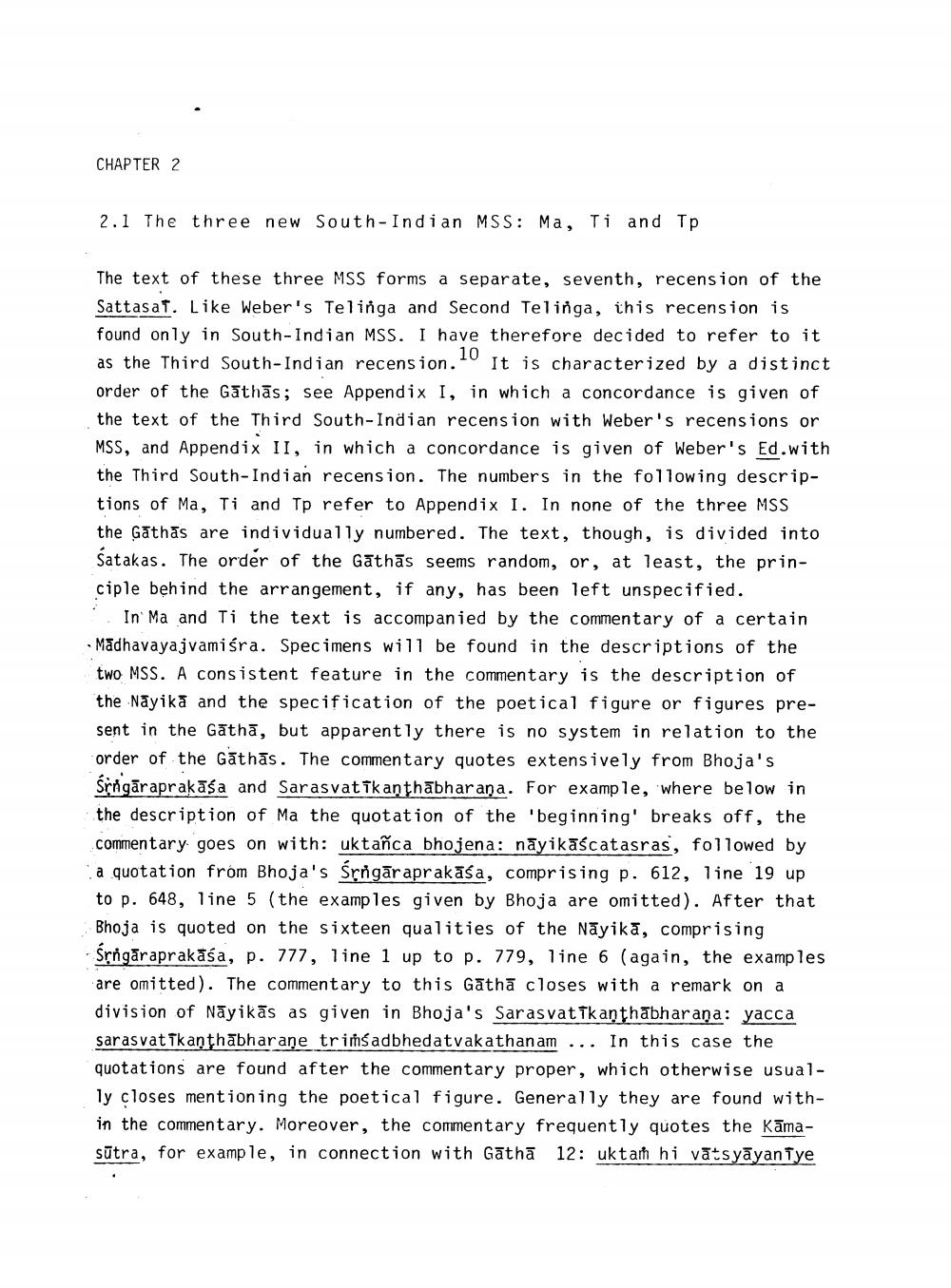________________
CHAPTER 2
2.1 The three new South Indian MSS: Ma, Ti and Tp
The text of these three MSS forms a separate, seventh, recension of the Sattasaf. Like Weber's Telinga and Second Telinga, ühis recension is found only in South-Indian MSS. I have therefore decided to refer to it as the Third South-Indian recension. It is characterized by a distinct order of the Gathās; see Appendix I, in which a concordance is given of the text of the Third South-Indian recension with Weber's recensions or MSS, and Appendix II, in which a concordance is given of Weber's Ed.with the Third South-Indian recension. The numbers in the following descriptions of Ma, Ti and Tp refer to Appendix I. In none of the three MSS the Gathas are individually numbered. The text, though, is divided into Satakas. The order of the Gathās seems random, or, at least, the principle behind the arrangement, if any, has been left unspecified.
In Ma and Ti the text is accompanied by the commentary of a certain • Madhavayajvamiśra. Specimens will be found in the descriptions of the two MSS. A consistent feature in the commentary is the description of the Nāyika and the specification of the poetical figure or figures present in the Gāthā, but apparently there is no system in relation to the order of the Gathās. The commentary quotes extensively from Bhoja's śrågāraprakāśa and Sarasvatīkanţhābharaṇa. For example, where below in the description of Ma the quotation of the 'beginning' breaks off, the commentary goes on with: uktañca bhojena: nāyikāścatasras, followed by a quotation from Bhoja's Srngāraprakāśa, comprising p. 612, line 19 up to p. 648, line 5 (the examples given by Bhoja are omitted). After that Bhoja is quoted on the sixteen qualities of the Nāyikā, comprising Śrngāraprakāśa, p. 777, line 1 up to p. 779, line 6 (again, the examples are omitted). The commentary to this Gathā closes with a remark on a division of Nāyikās as given in Bhoja's Sarasvat Tkanthābharaṇa: yacca sarasvatīkanthābharaṇe trimś adbhedatvakathanam ... In this case the quotations are found after the commentary proper, which otherwise usually closes mentioning the poetical figure. Generally they are found within the commentary. Moreover, the commentary frequently quotes the Kāmasūtra, for example, in connection with Gathā 12: ukta hi vatsyāyan Tye




